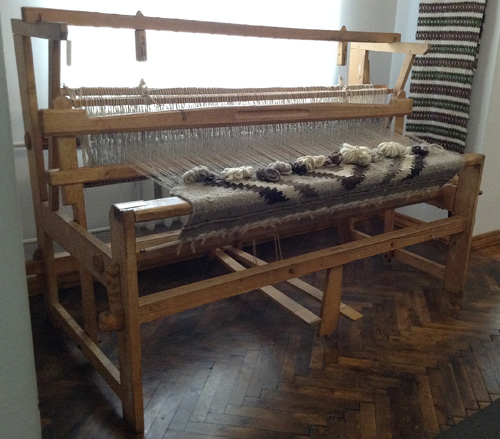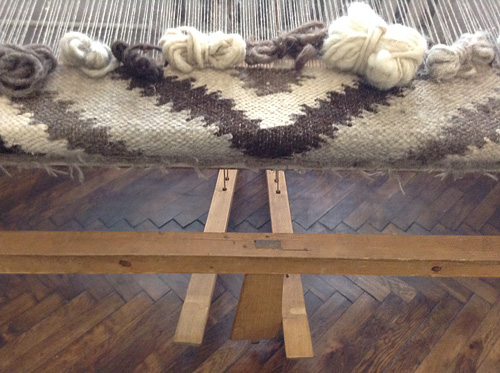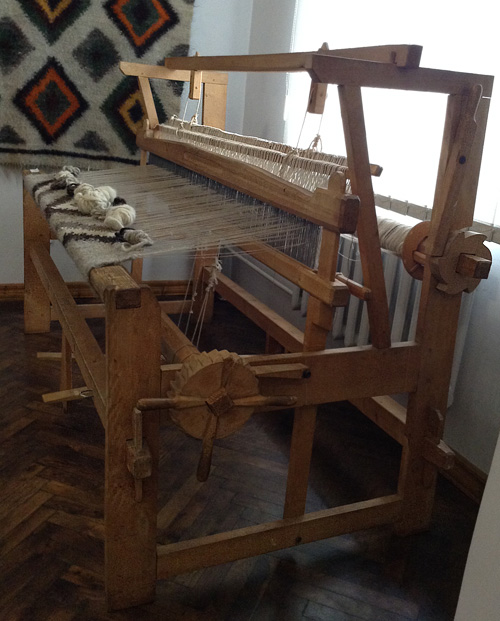 In the old days, fabrics were handmade only and people invented different tools that helped them make the cloth. For instance, various spinning and weaving tools. On the territory of Ukraine, the first evidence of woven fabric date back to the Cucuteni-Trypillia culture (appr. 4800-3000 B.C.). Although Ukrainians usually use industrially-produced fabrics today, there are still many vintage spinning&weaving tools in local museums, private collections, and in possession of artisans who still produce hand-woven cloth.
In the old days, fabrics were handmade only and people invented different tools that helped them make the cloth. For instance, various spinning and weaving tools. On the territory of Ukraine, the first evidence of woven fabric date back to the Cucuteni-Trypillia culture (appr. 4800-3000 B.C.). Although Ukrainians usually use industrially-produced fabrics today, there are still many vintage spinning&weaving tools in local museums, private collections, and in possession of artisans who still produce hand-woven cloth.
Here are some vintage spinning and weaving tools used in Ukraine.
Set of spinning&weaving tools from Zhytomyr region of Ukraine, the 19th-20th century. Here you can see 3 spindles, a flying shuttle, 2 combs for yarn, and a ball of linen thread. Local History Museum in Zhytomyr
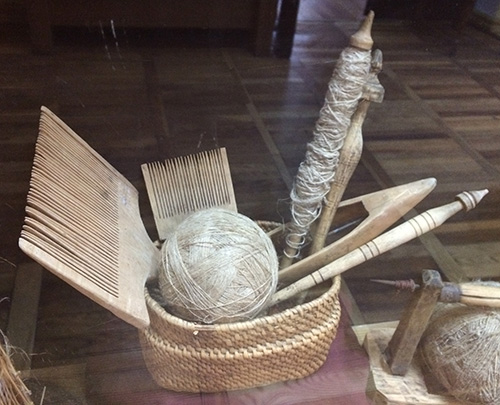
By the way, did you know that a flying shuttle was invented in the 18th century and patented in 1733 in Europe? This was one of the very important inventions of The Industrial Revolution. It helped artisans weave much wider fabrics than before and led to automatic machine looms.
Vintage spinning wheel and a skein of natural fibers (hard to tell if it’s linen or hemp fibers). Vinnytsia region of Ukraine. Vinnytsia Regional Museum of Local History
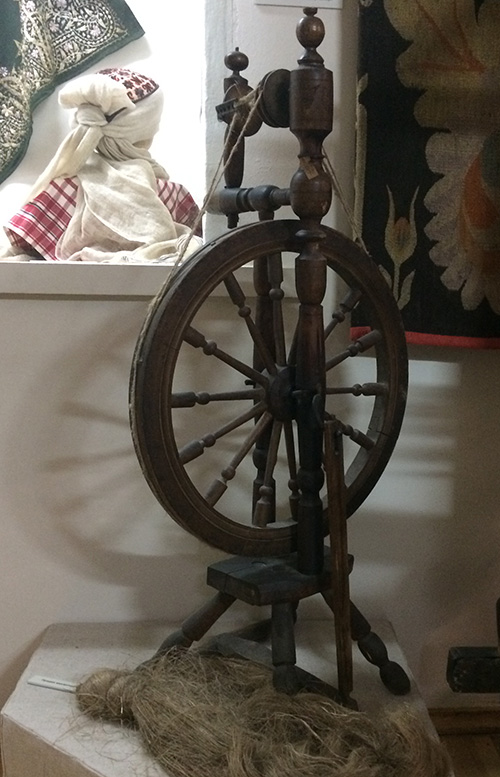
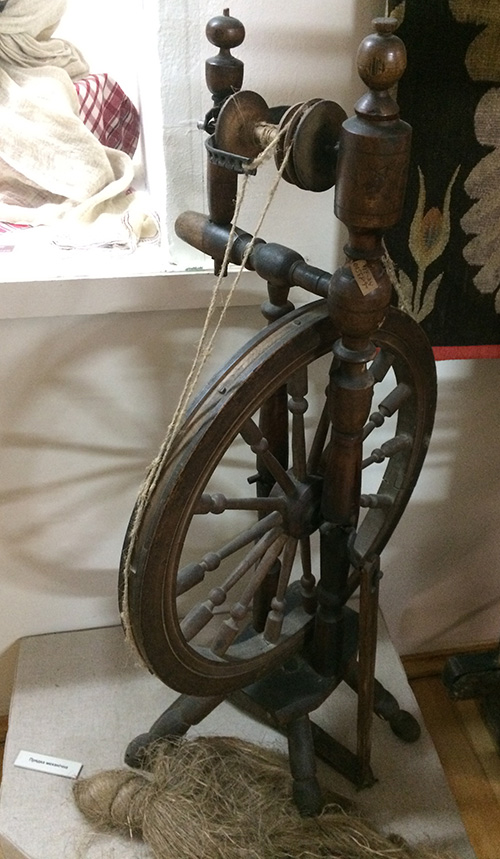
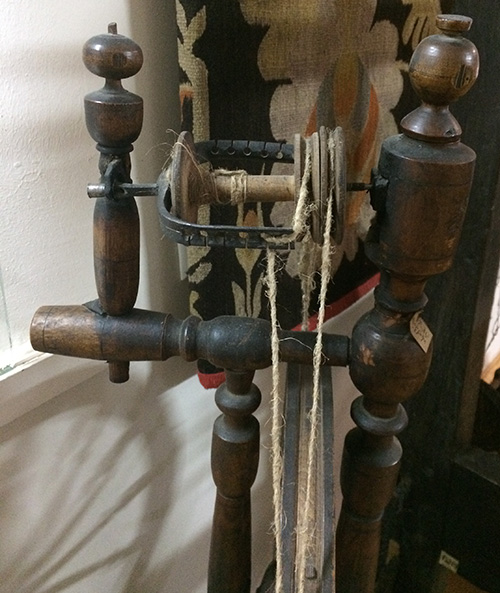
Wooden weaving loom from Podilia area (Vinnytsia region of Ukraine), the 19th-20th century. You can also see a piece of simple and coarse woven cloth and a vintage flying shuttle. Vinnytsia Regional Museum of Local History
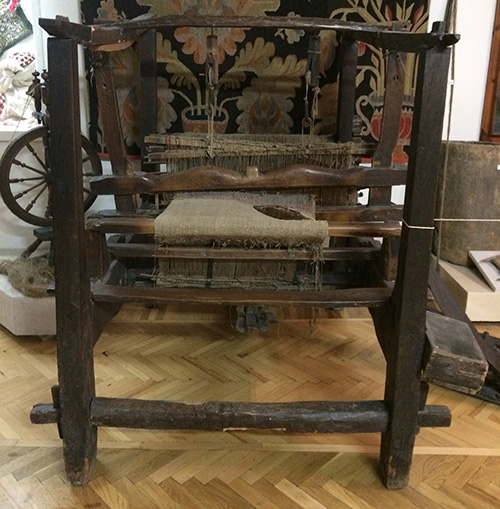
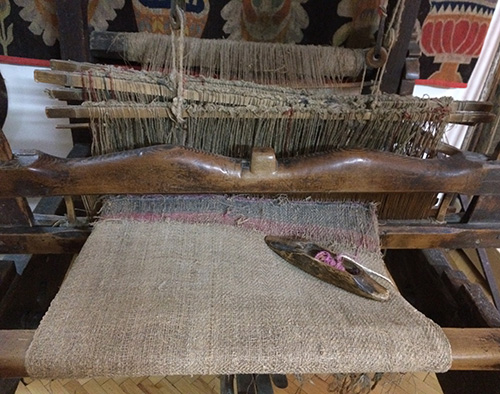

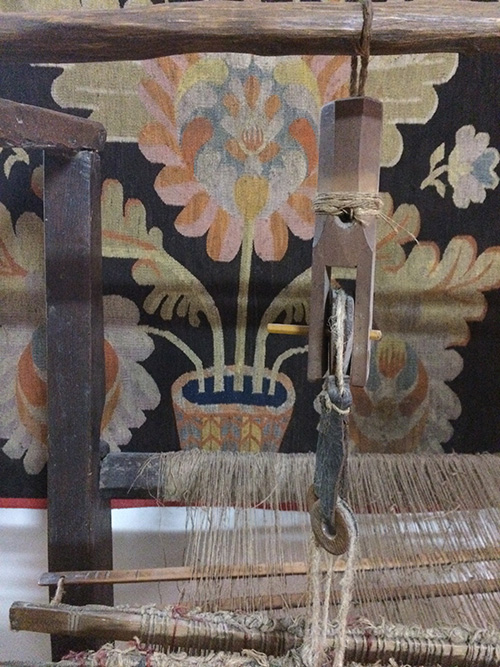
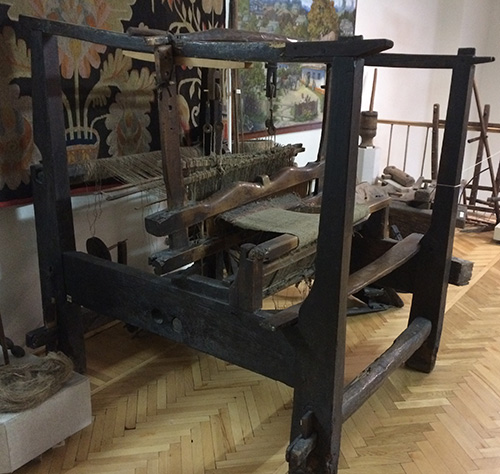

Reconstruction of an ancient vertical weaving loom used by people of the Cucuteni-Trypillia culture (appr. 4800-3000 B.C.). You can see simple loom weights made of clay that served to hold the warp threads taut on a loom. Also, a stick serves as a shuttle. The loom is very primitive, but just imagine, this construction is at least 5,000 years old. Vinnytsia Regional Museum of Local History

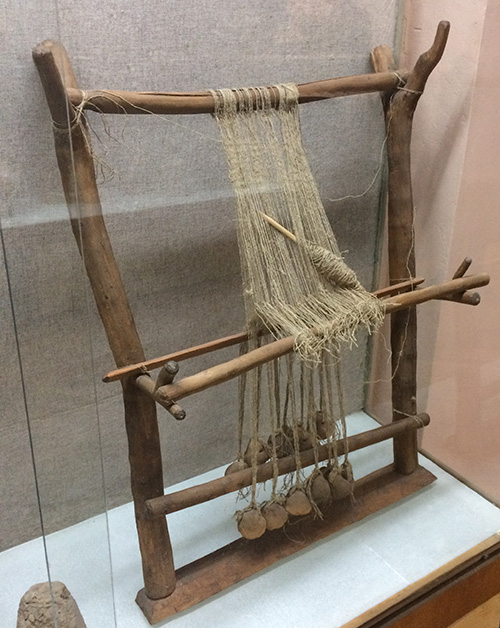
The Cucuteni-Trypillia culture is a Neolithic-Eneolithic archaeological culture in Eastern Europe (particularly, Ukraine, Romania, and Moldova). It is a rather highly developed culture: they built the largest settlements in Neolithic Europe (up to 3,000 structures and 20,000 to 46,000 people), they had 2-story houses; they produced various pottery and clay household items, toys, etc. with intricate patterns; women wove fabrics and made clothing; many historians think that these people used wheels because toys with wheels form the Cucuteni-Trypillia period have been found.
Here is a reconstruction of a similar weaving loom from Ancient Greece. Exhibited in Berlin, Germany

Complicated in construction, Ukrainian weaving loom. Exhibited on one of the folk festivals
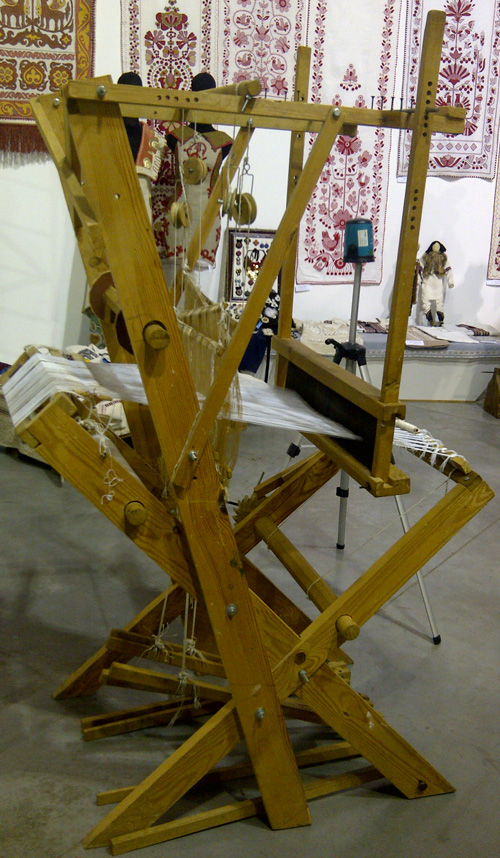
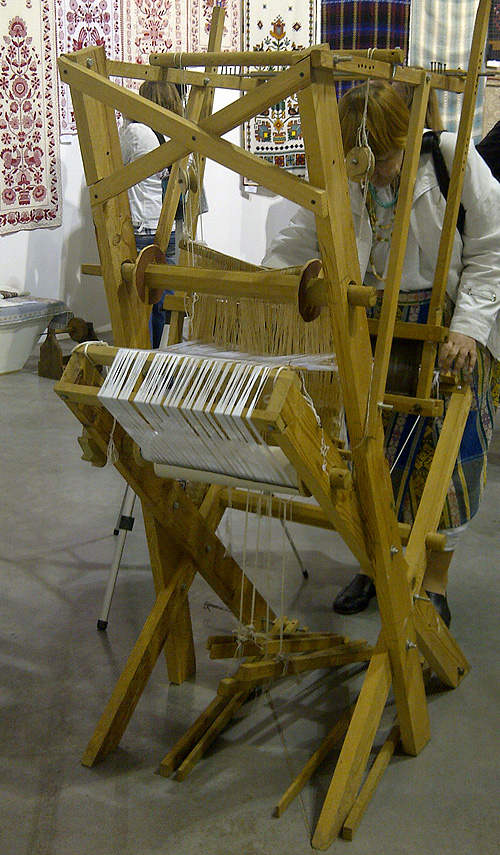
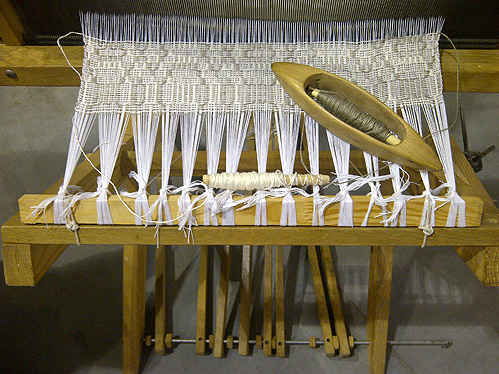
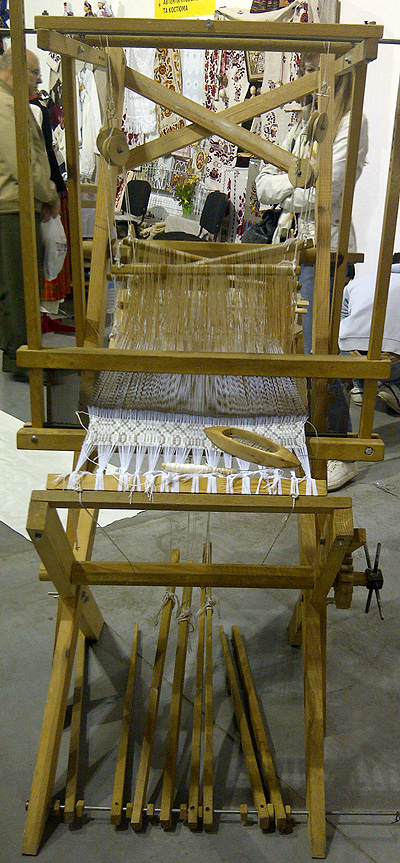
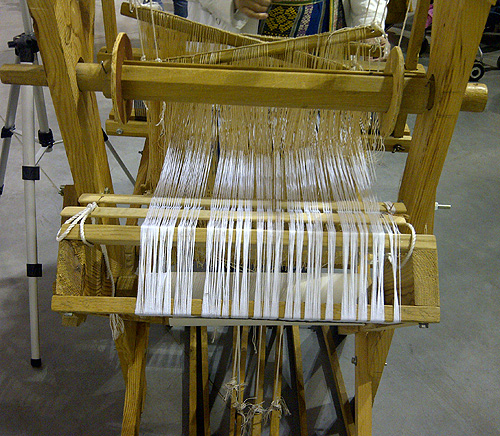
Large vintage loom used for weaving thick woolen cloth and blankets. Such looms were used – and still are by some craftswomen – in Carpathian regions of Ukraine. Kolomyia Museum of Hutsul Folk Art

